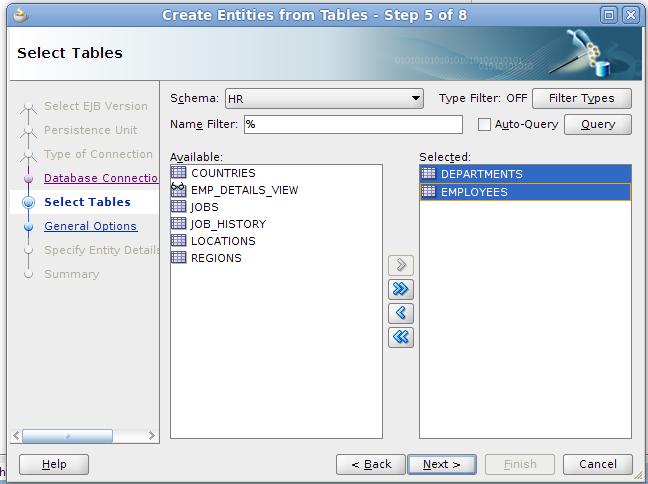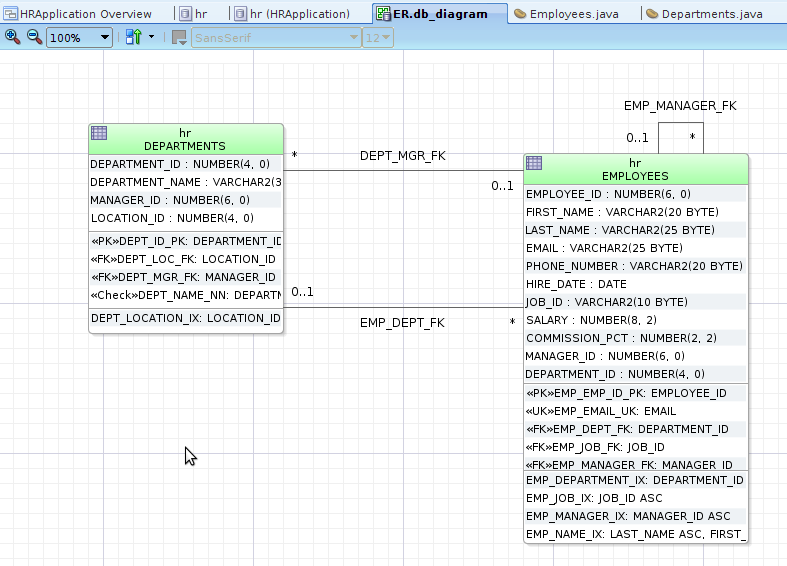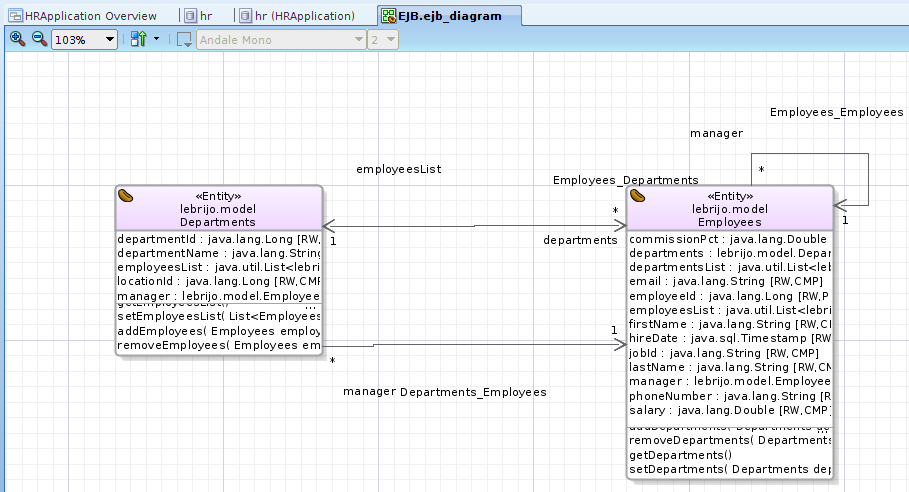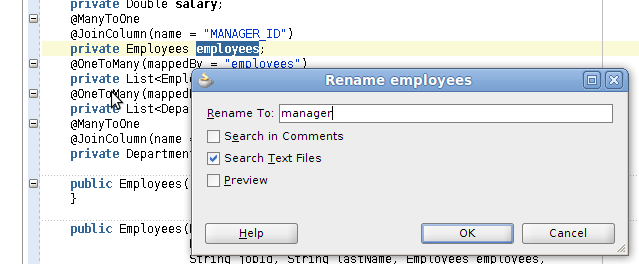En este artículo crearemos un modelo de persistencia para nuestra pequeña aplicación de gestión de empleados. Basado en un anterior post donde creamos una aplicación básica de JDeveloper.
Sobre el proyecto en el menú contextual, New > EJB > Entities From Tables. Vamos a utilizar la tecnología EJB 3.0, anotando los beans de entidad como JPA 2.0:
Seleccionamos las tablas Departaments y Employees.
Como vimos en un artículo anterior, se puede obtener el diagrama de una base de datos ya hecha. Yo me lo he creado en el paquete lebrijo.diagrams:
Podemos crear un New > EJB Diagram, y arrastrando las entidades anteriormente creada, tendremos el dibujo entero:
En los dos beans refactorizaré el atributo employees por manager, ya que define más claramente la relación.
Esto se actualiza automáticamente en el diagrama de EJB (en teoria, en realidad hay que volver a arrastrar las entidades).
Como último ejercicio, podemos crear la consulta de encontrar por nombre, ampliando la anotación de consultas de la entidad Employees:
@Entity @NamedQueries({ @NamedQuery(name = "Employees.findAll", query = "select o from Employees o") , @NamedQuery(name = "Employees.findByName", query = "select o from Employees o where o.firstName like :p_name") }) |




